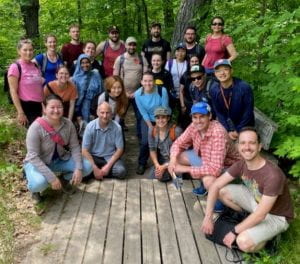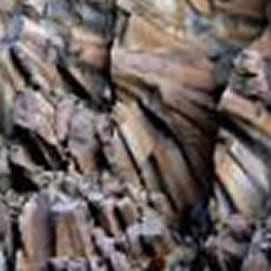Welcome to the Paleomagnetic Lab at UWM
Variations in Earth’s magnetic field recorded in rocks and sediments have the ability to provide unique information on a wide variety of earth processes, from core to crust and from deep time to the very recent past. Paleomagnetism is the study of these “rock records” of field variations. By characterizing variations in the geomagnetic field, we can exploit these variations to better understand volcanic and other geologic processes, from local to planetary scales. It is also necessary to understand how reliable our rock records are, so studies that seek to clarify the origin of magnetic remanence in igneous materials are equally important. This work combines standard rock- and paleomagnetic techniques with potential field observations and modeling, as well as techniques in experimental petrology.
Research
 How does the Earth’s magnetic field change over time?
How does the Earth’s magnetic field change over time?
Using paleomagnetism to interpret volcanic processes.
News
06-20-2023: Congratulation to Miles Harbury, who successfully defended his MS degree: Testing the Use of Anisotropy of Magnetic Susceptibility (AMS) in Determining Genetic Origins of Paleoproterozoic Diamictites. Miles was co-advised by Prof. John Isbell, and he will be starting a PhD program at Oregon State University in the fall.

12-15-2022: Melissa and Miles represented the Paleomag lab at AGU this year.

06-15-2022: MS student Melissa Sikes is at the Institute for Rock Magnetism this week attending the Summer School in Rock Magnetism. While there, she bumped into UWM Paleomag Lab alum Ji-In Jung! (Melissa and Ji-in at photo center.)

12-16-2021: Paleomag lab members Miles Harbury and Theo Holmes are participating in the Emerging Geoscience Scholars program at the fall AGU meeting in New Orleans! (Miles far left in photo)

11-04-2021: Miles Harbury is in Ontario this week collecting samples for AMS analysis! He’s joined by fellow grad student Allison Kusick.

03-05-2021: Former MS student Ji-In Jung (now a PhD student at Stanford University) published her UWM MS work in Frontiers in Earth Science! Congrats Ji-In!
See News Archive


